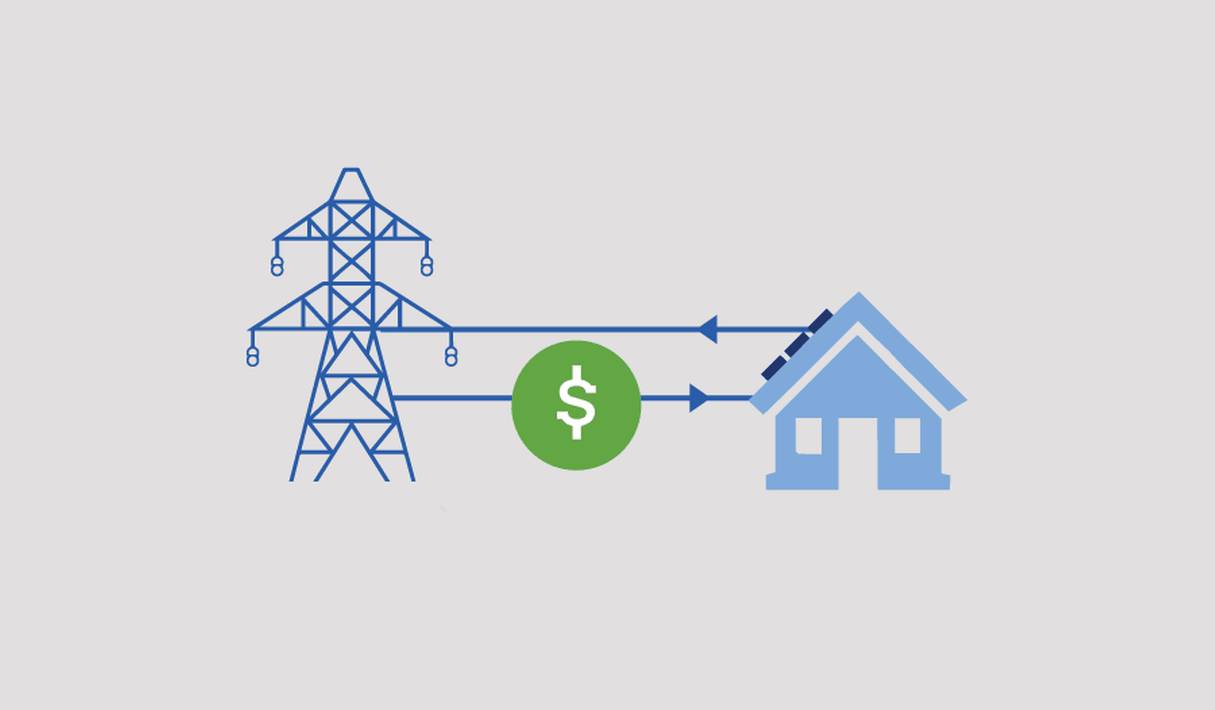
What Is a Solar Hot Water System? Solar hot water is a system that harnesses the sun’s energy to warm […]

The global community is increasingly adopting renewable energy sources like solar to curb hazardous gas emissions. Solar energy stands out among these greener choices because of its ready availability, reasonable cost, and friendly impact on nature.
In Australia, where the sun shines brightly most of the year, solar has grown notably in appeal. An important incentive pushing Australians to install solar panels on homes and offices is the country’s “feed-in tariff” program.
This program compensates households and companies for extra electricity sent back to the grid, making solar energy an affordable way to help neighbours while helping the planet.
This article will explain what feed-in tariffs are and how they function in Australia, as well as sharing some figures and facts to showcase their impact on increasing solar energy use.
A feed-in tariff acts as a bonus or incentive you get for any surplus power your renewable energy source generates and shares with the grid.
The value of the feed-in tariff depends on several elements, such as location, dimensions and model of the system, the hour of the day, and the electricity provider. Feed-in tariffs are typically listed in cents per kilowatt-hour (c/kWh).
Feed-in tariffs are grouped into two main classifications: Gross and net.
A gross feed-in tariff rewards you for the total amount of electricity that your system yields, irrespective of whether you use it or not.
A net feed-in tariff pays you only for the excess electricity that you export to the grid, after deducting your consumption.
The variation in feed-in tariffs can depend on the hour of the day or even the current season. Some tariffs remain constant, offering the same rates irrespective of the time, while others fluctuate with time, paying back different amounts during peak times, regular times, or dull periods.
These time-dependent tariffs are orchestrated to mirror the variable value of electricity in the large-scale trade arena, thereby encouraging solar users to shift their usage to instances when electric power costs less and is more prolific.
Australia feed-in tariffs are managed by each state and back up a federal rule called Renewable Energy Target (RET). The RET means electricity sellers need to get some of their energy from clean sources. These can include places like solar, wind, hydro, or biomass.
The RET also instigates a marketplace for renewable energy certifications (RECs), bestowed to renewable energy creators for every megawatt-hour (MWh) of power they generate. These RECs can subsequently be bought or bartered to electricity providers, assisting them in fulfilling their RET commitments.
The Renewable Energy Target (RET) program also contributes by offering monetary support for setting up small-scale green energy systems, like solar PV, via the Small-scale Renewable Energy Scheme (SRES).
The SRES rewards small-scale technology certificates (STCs) to qualifying systems that can be traded in for a discount or refund on the initial expenditure of the setup.
The total number of STCs allocated is primarily dictated by the system’s capacity and situation, along with the anticipated quantity of electricity it will yield over its lifespan.
The feed-in tariffs extended by power providers supplement the perks of the RET and the SRES. Although, these feed-in tariffs are not compulsory nor consistent nationwide.
Every state possesses its distinct rules and conditions pertaining to the qualification, period, and pricing of the feed-in tariffs.
Solar panel adoption across Australia soared since solar feed-in tariffs were introduced. Two million households embraced rooftop solar systems by December 2023, says the Australian Photovoltaic Institute.
Queensland led the solar surge, introducing generous tariffs early. By March 2021, around 72% of Queenslanders basked under gleaming solar panels on top of their homes.
Profits from the solar feed-in tariff are a direct bonus for any excess energy transferred from your solar installation to the power network.
This remuneration hinges on the feed-in tariff rate, reflecting the expense of every kilowatt-hour (kWh) of energy you share. Factors like your geographical location, your chosen energy supplier, and the tariff scheme can influence the rate’s variance.
In order to estimate your solar feed-in tariff earnings, it is necessary to acquire the following details:
The basic formula to calculate your solar feed-in tariff payments is:
Solar feed-in tariff payments = Feed-in tariff rate x Exported electricity
For example, suppose you have a 5-kW solar system that generates 20 kWh of electricity per day, and you consume 15 kWh of electricity per day. If you are on a net feed-in tariff scheme that pays you 10 c/kWh, your solar feed-in tariff payments would be:
Solar feed-in tariff payments = 10 c/kWh x (20 kWh – 15 kWh) = 50 c/day
Suppose you’re enrolled in a gross feed-in tariff program paying 20 cents per kWh. Here’s what your solar feed-in tariff earnings would look like:
Solar feed-in tariff payments = 20 c/kWh x 20 kWh= 400 c/day.
However, it’s important to note that you’ll still be responsible for the 15 kWh of electricity you draw from the grid. The cost of this could potentially surpass the feed-in tariff rate.
Incentive programs like feed-in tariffs play a key role in encouraging solar energy adoption in Australia. They carry diverse benefits, encompassing economic, environmental, and societal areas for both solar power users and the overall electricity framework.
Yet, they are not free of shortcomings and problems that require resolution and correct handling. The value and feasibility of solar energy is not determined solely by feed-in tariffs, it also takes into account factors like the patterns of electricity consumption, the system scale and efficiency, and the specifics of the electricity plan and provider.
By thoughtfully considering these elements, individuals using solar energy can maximize its benefits and use it to build a more sustainable and eco-friendly future for Australia.